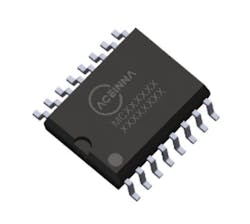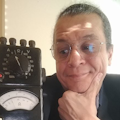Advanced Overcurrent Detection Serves Next-Gen Power Systems
The more functionality that a system has to present to the user, the more complex and power-hungry it tends to be.
Power architects are under tremendous pressure to expand the boundaries of power density, system efficiency, and response time, while also reducing the size and cost in the latest power system designs. High-performance power electronics demand smart current sensing to support the complex web of control, telemetry, and protection circuitry needed.
ACEINNA, a MEMS-based sensing solutions company, develops current-sensing technologies critical for next-generation cars, robots, and other advanced autonomous applications. Their MCR1101-50-3 is part of their latest generation of fully integrated, isolated, current sensor ICs that offer improved accuracy, bandwidth, and step-response time.
The MCR1101-50-3 provides power designers with a current-sensing solution that has high levels of isolation and a ratiometric output. We spoke with Michael DiGangi, Executive Vice President, about how advanced current sensing supports the latest power applications.
EE: Now that we're migrating toward more intelligent solutions, power has gotten smarter. The aspects of power like overcurrent protection have also gotten smarter, right? It's not just a dumb circuit now.
Michael DiGangi: Now, it's a more closed-loop system. You have a sensor, you have a controller, and they’re basically running at a certain bandwidth. One of the goals is to increase the bandwidth to reduce the reaction time. Right now, we also need a fast response time, because power circuits are not only handling larger currents, they're also switching faster. Because you need to react at very high speeds, when the controller switches.
EE: What are some of the application spaces that would benefit from going from a dumb solution to a smart solution?
DiGangi: Obviously, it begins with power supplies, right? But the biggest value that I see emerging is audio. Entertainment systems can be extremely expensive. The speakers, for example. You’ve got to protect them really fast. This is one area that we're seeing a lot of demand, from high-fidelity and high-end amplifier companies. One of the interesting aspects about audio, is that it's actually insufficient amplification that can destroy a speaker, because it'll go to square waves that can totally destroy the voice coil.
EE: It's interesting to think about it from that aspect, speakers are delicate things, aren't they? What you had mentioned about speaker voice coils is very compelling, because that brings up an entire area of engineering that a lot of people aren't thinking of, things like MEMS and microrobotics. These and other applications can also be very delicate, micro-electromechanical circuits that are very power sensitive. Acienna addresses such overcurrent-protection applications with a single-chip solution.
Overcurrent sensing is protecting delicate electronics in applications that you didn't think about needing them. For example, medical sensors that are in-patient or other areas where, once upon a time, you just used a very, very sensitive fuse or something like that. Now you can have a much more intelligent power management methodology. We've been doing this current-sensor thing for quite some time. We are one of the leading companies when it comes to magnetic current sensing.
We’re leveraging things like the magnetic compass, a solution that you can find in every cellphone today. We can also support the AC side of things, that's another area when it comes to current sensors. Proper sensing is about accuracy over temperature over time, right? So that's the key combination that we have perfected over the years. We have evaluation kits and application notes to guide people when they design their own boards.
EE: Is there anything you wanted to leave our readers with?
DiGangi: My only comment is that our product portfolio is growing extremely fast, because of market drivers like Silicon Carbide MOSFETs pushing up switching speeds. We have a single-chip solution to address that right now. Magnetic current sensing is going to be an important enabler to push technologies like these more into the mainstream in my personal view.
I know from experience. One of the most tricky things to do is driving lasers, they have a really fast turn-on, and if you're not careful, you can mess it up. Especially for critical applications, magnetic current sensing is going to be a key enabler. We expect more and more people to get comfortable using and adapting our tech in high-volume applications, especially in situations like GaN being used with LIDAR now and such.
About the Author
Alix Paultre
Editor-at-Large, Electronic Design
An Army veteran, Alix Paultre was a signals intelligence soldier on the East/West German border in the early ‘80s, and eventually wound up helping launch and run a publication on consumer electronics for the US military stationed in Europe. Alix first began in this industry in 1998 at Electronic Products magazine, and since then has worked for a variety of publications in the embedded electronic engineering space. Alix currently lives in Wiesbaden, Germany.
Also check out his YouTube watch-collecting channel, Talking Timepieces.



